When it comes to building a new PC, upgrading a server, or simply needing reliable storage for years to come, the question inevitably arises: “Which is the best HDD brand?”
It’s a question I hear all the time, and honestly, the answer isn’t as simple as naming one company. While solid-state drives (SSDs) have dominated the conversation for speed, hard disk drives (HDDs) remain the absolute champions of capacity and cost-effectiveness. Whether you are a gamer needing massive space for your library, a professional archivist managing terabytes of video, or a casual PC user just looking for the best internal hard drive to supplement your boot drive, choosing the right brand and model is paramount.
As someone who has built countless systems and relied on these mechanical workhorses for decades, I can tell you that the difference between a decent drive and the most reliable hard drive often comes down to understanding the manufacturer’s specific product lines. We aren’t just looking for the cheapest terabyte; we are seeking resilience, longevity, and performance tailored to our specific needs.
In this comprehensive guide, we are going to dive deep into the world of mechanical storage. We’ll compare the major players—Western Digital, Seagate, and Toshiba—evaluate their specific offerings, and help you pinpoint the best internal HDD for your next project, guaranteeing you invest in the most reliable drives on the market.
Contents
- 1 Understanding the Modern Hard Disk Drive Landscape
- 2 The Titans of Storage: Identifying the Best HDD Brands
- 3 Deep Dive: Finding the Best Internal Hard Drive for Specific Needs
- 4 Technical Considerations: What Makes a Drive Reliable?
- 5 Brand Breakdown: Comparing the Most Reliable Drives by Series
- 6 Practical Tips for Maximizing HDD Lifespan and Reliability
- 7 Final Verdict: Which Best HDD Brand Should You Choose?
Understanding the Modern Hard Disk Drive Landscape
Before we start naming names, we need a baseline understanding of what makes a great hard drive in 2025. Many people assume HDDs are a dying technology, but that couldn’t be further from the truth. They are evolving, becoming denser, faster, and, crucially, more reliable.
Why HDDs Still Matter in the Age of SSDs
We all love the lightning speed of NVMe and SATA SSDs—they are indispensable for operating systems and crucial applications. But when you look at pure price-per-gigabyte, the HDD still wins by a massive margin.
For many users, especially those dealing with large media files, backups, or extensive game libraries, HDDs are essential. Imagine trying to store 20TB of archived client footage solely on SSDs; the cost would be astronomical. HDDs offer economical, high-capacity storage solutions that make them the undisputed choice for bulk data. If you’re building a Network Attached Storage (NAS) system or looking for the best hdd for long term storage, an HDD is still the most sensible and economic solution.
Key Metrics for Evaluating Reliability
When we talk about the most reliable hard drive, we aren’t just relying on anecdotal evidence; we look at cold, hard data provided by manufacturers and independent testing labs (like the famous reports from Backblaze). Two technical metrics are crucial:
1. Mean Time Between Failures (MTBF)
MTBF is an estimate of the average time a device will run before experiencing a failure. For enterprise and NAS drives, you often see MTBF ratings exceeding 1.5 million or even 2.5 million hours. While this is a statistical measure and not a guarantee of your drive’s lifespan, higher MTBF figures indicate a design built for resilience and continuous operation.
2. Annualized Failure Rate (AFR)
AFR is arguably more useful for consumers. It is the percentage of drives expected to fail in a given year. If a manufacturer’s drive line consistently shows a low AFR (say, below 1%), it’s a strong contender for the title of most reliable hdd. This is often the metric that separates standard desktop drives (which might be rated for 8×5 use) from enterprise drives (rated for 24×7 use).
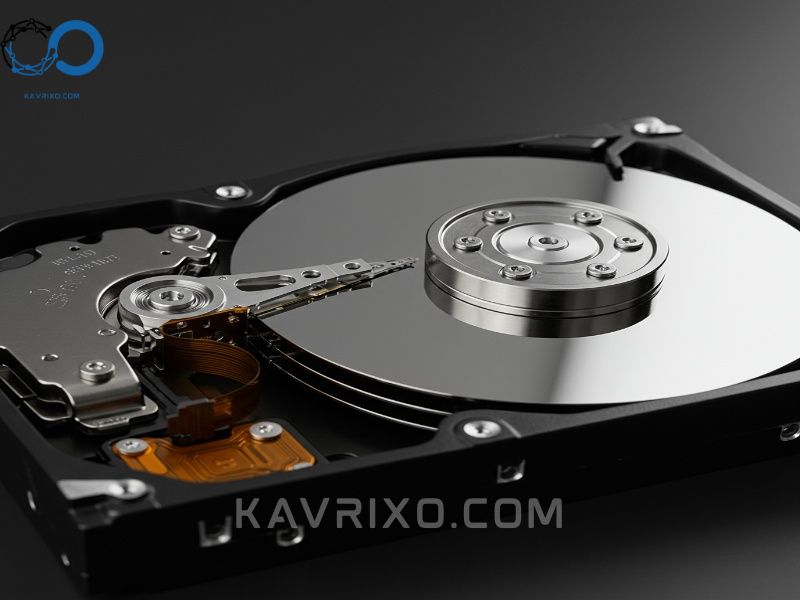
The Titans of Storage: Identifying the Best HDD Brands
In the modern market, the landscape of best hdd brand contenders has narrowed significantly. We primarily focus on three global manufacturers: Western Digital (WD), Seagate, and Toshiba. Each brand has carved out a niche, offering different strengths across performance, reliability, and price.
Western Digital (WD): The Versatility Champion
Western Digital is arguably the most recognizable name in storage and is often cited by professionals seeking the most reliable hard drive. WD uses a well-known color-coding system to differentiate its product lines, which makes choosing the right drive much easier once you understand the system:
- Blue: Standard desktop use, good value.
- Black: High-performance, low-latency desktop use, excellent choice for a best hard disk drive for gaming companion drive.
- Red (or Red Plus/Pro): Specifically designed for NAS environments, offering resilience and vibration control for 24/7 operation.
- Gold: Enterprise-grade, maximum reliability, often selected as the most reliable disk drives for data centers.
WD’s strength lies in its consistency and commitment to specialized drives. If you need a specific type of drive—be it for gaming or archival—WD usually has a highly-rated, targeted product ready.
Seagate: The Capacity and Value Leader
Seagate has long been WD’s fiercest competitor, often leading the charge in offering the highest capacity drives at the most competitive price points. They are a powerhouse in both the consumer and enterprise segments.
Seagate’s focus on capacity and speed makes their FireCuda and Barracuda lines extremely popular among PC builders looking for top rated internal hard drives. Their IronWolf line is the direct competitor to WD Red, designed specifically for NAS and often praised for its performance under sustained load. Seagate also boasts the Exos line, which represents some of the highest-capacity, most reliable drives available in the enterprise space.
If your primary goal is maximizing terabytes without breaking the bank, or if you are specifically looking for the best hard disk drive for gaming where large capacity is crucial, Seagate often provides fantastic value.
Toshiba: The Understated Performance Player
Toshiba might not have the same massive market share as WD or Seagate, but they consistently produce high-quality, high-performance mechanical drives, especially in their X300 and N300 lines. Historically, Toshiba acquired the HDD manufacturing assets of Hitachi (HGST), which were known for exceptional reliability, giving Toshiba a strong pedigree in the reliability department.
Toshiba drives often fly under the radar but offer excellent performance metrics, especially their high-RPM (7200 RPM) desktop drives and their robust NAS drives. They are a solid third choice, particularly for users who value straightforward performance without the complex color codes of their competitors.
Deep Dive: Finding the Best Internal Hard Drive for Specific Needs
The “best” drive is completely dependent on how you intend to use it. A drive designed for high-speed gaming is built differently than one designed for 10 years of cold storage. Let’s break down the optimal choices based on common use cases, focusing on the best internal hard disk drive for each scenario.
The Best Internal HDD for PC Users and Everyday Tasks
For the average desktop user who needs supplemental storage for documents, music, and occasional large file transfers, reliability and quiet operation are key. You don’t necessarily need the expensive, high-end performance drives.
Recommended Series:
- WD Blue: A reliable, cost-effective workhorse. Ideal for secondary storage where speed isn’t the absolute priority.
- Seagate Barracuda (Standard): Excellent general-purpose drives offering a good balance of speed and capacity.
These drives offer the best internal hard drive for pc use when factoring in cost, noise, and expected lifespan under typical 8-hour daily use. We generally recommend 7200 RPM drives for responsiveness, though 5400 RPM/5900 RPM drives are acceptable for purely archival purposes.
Selecting the Best Hard Disk Drive for Gaming (Performance Focus)
Gamers require massive storage capacity (modern games take up 100GB+ easily) coupled with fast loading times. While the OS and a few favorite games should live on an SSD, the bulk of your library needs a performance HDD.
The primary factor here is speed (7200 RPM minimum) and a large cache (256MB+).
Recommended Series:
- WD Black: The gold standard for performance HDDs. They feature high RPMs, aggressive caching, and excellent sustained transfer rates, making them the best hard disk drive for gaming companion drives. They come with a premium price but deliver speed and a five-year warranty.
- Seagate FireCuda: These drives often incorporate a small amount of NAND flash (hybrid drive or SSHD), which intelligently caches frequently accessed data (like game textures), boosting perceived loading speeds significantly above traditional HDDs.
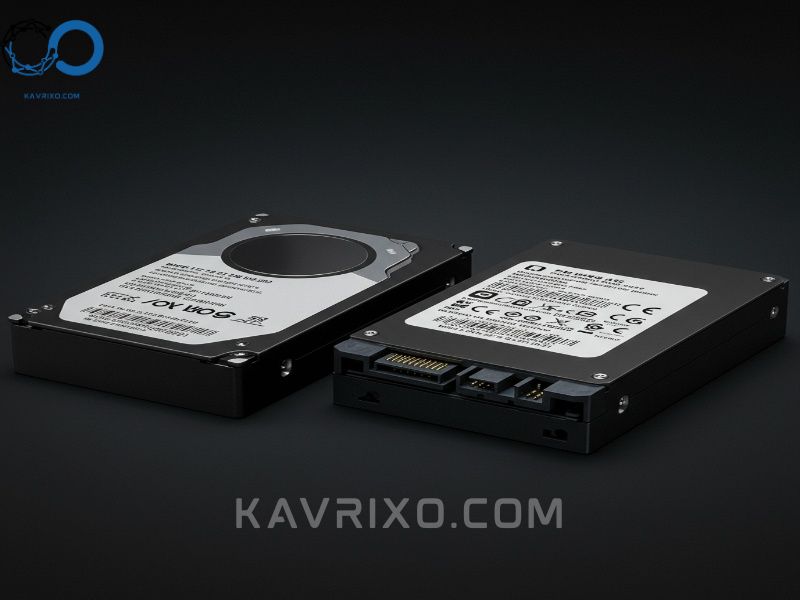
Prioritizing the Most Reliable Hard Drive for Long-Term Archiving
If your goal is to buy a drive, fill it up, and trust that data will be intact five years from now, you need reliability and stability over speed. This is where enterprise or NAS-rated drives shine, as they are tested rigorously for thermal tolerance and non-stop operation, making them the best hdd for long term storage.
Recommended Series:
- WD Red Plus/Pro: Optimized for archival and NAS use, these drives manage vibration well and have excellent MTBF ratings.
- Seagate IronWolf/IronWolf Pro: Known for their robust health management and excellent performance in multi-bay enclosures.
When choosing the most reliable hdd for archival, always look for drives specifically rated for use in multi-drive environments, as they are designed to handle the constant vibration and heat generated by surrounding drives.
Choosing Top Rated Internal Hard Drives for NAS Systems
NAS systems (Network Attached Storage) require drives that can handle 24/7 spinning, sophisticated RAID operations, and high workload rates. Standard desktop drives will fail prematurely in this environment. You need top rated internal hard drives designed specifically for this purpose.
Key Features Needed: Vibration sensors, RAID-optimized firmware (Time-Limited Error Recovery – TLER/ERC), and high workload ratings (up to 550TB/year for Pro versions).
Recommended Series:
- WD Red Pro or Gold: The Gold series is specifically built for enterprise data centers and offers the absolute highest reliability ratings.
- Seagate IronWolf Pro or Exos: The Exos line is Seagate’s enterprise offering and often demonstrates incredible longevity in real-world testing scenarios.
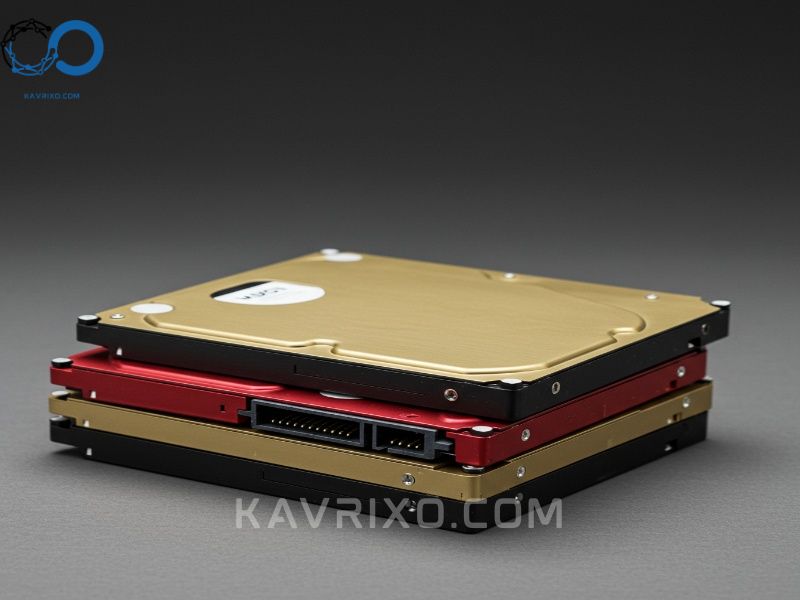
Technical Considerations: What Makes a Drive Reliable?
Beyond the brand name, there are fundamental technical differences that determine whether a drive is suitable for your task and how long it will last. Understanding these details is crucial for selecting the best internal hard drive.
Speed Matters: RPM, Cache, and Interface (SATA III)
Rotational Speed (RPM)
The speed at which the internal platters spin (Revolutions Per Minute) directly impacts sequential read/write speeds and access time.
- 5400 RPM / 5900 RPM: Better energy efficiency, quieter, suitable for cold storage.
- 7200 RPM: Standard performance level for desktop and gaming drives. Faster access times.
- 10,000 RPM (e.g., WD VelociRaptor – now largely phased out): Extreme performance, often replaced by high-end SSDs today.
Cache Size
The cache (or buffer) is a small amount of fast memory on the drive controller used to store frequently requested data. Modern drives often have 128MB or 256MB of cache. A larger cache generally helps smooth out performance during heavy I/O operations, particularly important for the best hard disk drive for gaming.
Interface
For internal drives, the current standard is SATA III (6 Gb/s). While HDDs rarely saturate this bandwidth, ensure your motherboard and cables support SATA III for maximum potential throughput.
The Role of Drive Firmware and Technology (CMR vs. SMR)
This is perhaps the most important technical detail when discussing the most reliable hard drive for specific applications, particularly NAS.
1. Conventional Magnetic Recording (CMR)
CMR writes data tracks parallel to each other without overlapping. This method offers consistent performance, especially during sustained writes (like RAID rebuilds or constant backups), and is the preferred technology for enterprise, NAS, and performance drives (WD Black, Red Pro, IronWolf Pro). If you are looking for the best internal hdd for constant use, insist on CMR.
2. Shingled Magnetic Recording (SMR)
SMR “shingles” or overlaps data tracks, allowing manufacturers to pack more data onto the platter, achieving higher capacity at a lower cost. The downside is that when the drive needs to rewrite data, it often has to rewrite large blocks of adjacent data, which can drastically slow down performance during heavy write operations or RAID rebuilds.
- SMR is generally fine for: Cold archival, light desktop use, and external backup drives where write intensity is low.
- SMR is generally dangerous for: NAS, RAID setups, or gaming drives where constant, random write activity is expected.
Always check the drive specification to ensure you are getting a CMR drive if you require high performance or high reliability.
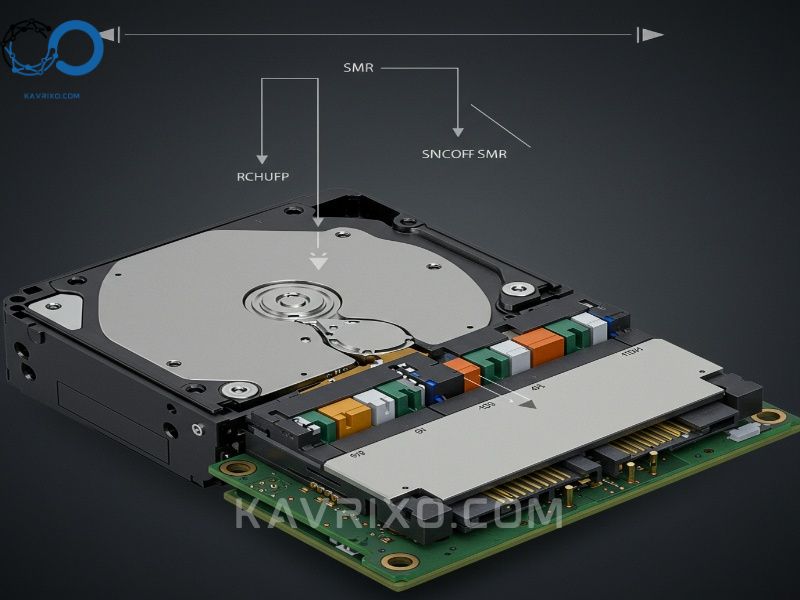
Capacity vs. Physical Size (2.5-inch vs. 3.5-inch)
Internal hard drives come in two main form factors:
- 3.5-inch: The standard desktop size. These drives offer the highest capacity (up to 24TB+) and best cooling, making them the standard choice for the best internal hard drive for pc and NAS systems.
- 2.5-inch: Used primarily in laptops or compact enclosures. They are generally slower and limited in capacity compared to their 3.5-inch counterparts due to size constraints.
For maximum reliability and performance, especially in high-capacity models, the 3.5-inch form factor is always recommended.
Brand Breakdown: Comparing the Most Reliable Drives by Series
To truly understand which is the best HDD brand for you, we need to look at the specific series that define their reliability and performance tiers.
Western Digital Lineup
| Series | Color Code | Use Case | Key Features | Reliability Rating |
|---|---|---|---|---|
| Blue | Standard | Everyday PC use, secondary storage. | 5400/7200 RPM, good value. | Standard (8×5) |
| Black | Performance | Gaming, video editing, high-load desktop. | 7200 RPM, High Cache, 5-year warranty. | High Performance |
| Red Plus | NAS/Prosumer | 1-8 Bay NAS systems, 24/7 operation (CMR). | TLER, Vibration Protection, 3D Active Balance Plus. | Very High (24/7) |
| Gold | Enterprise | Data centers, mission-critical servers. | Highest MTBF (2.5M hours), 5-year warranty. | Extreme Reliability |
If you are looking for the best rated internal hard drives purely on reliability metrics, WD Gold is generally unbeatable, though overkill (and expensive) for a home user. WD Red Plus is the sweet spot for the average user seeking the most reliable hdd for home backup.
Seagate Lineup
| Series | Name | Use Case | Key Features | Reliability Rating |
|---|---|---|---|---|
| Barracuda | Standard | Desktop/PC primary or secondary storage. | 5400/7200 RPM, budget-friendly. (Some models SMR) | Standard |
| FireCuda | Hybrid/SSHD | Gaming, performance desktop. | Integrated NAND flash cache, rapid boot times. | High Performance |
| IronWolf | NAS/Prosumer | 1-8 Bay NAS systems (CMR). | AgileArray firmware, RV sensors, Health Management. | Very High (24/7) |
| Exos | Enterprise | Hyperscale data centers, maximum capacity. | High workload rating (550TB/year), Helium-sealed. | Extreme Reliability |
Seagate often wins on capacity-per-dollar, especially with their Exos drives, which are becoming increasingly popular among prosumers looking for high-capacity, most reliable disk drives without paying the full “Enterprise” premium associated with some competitors.
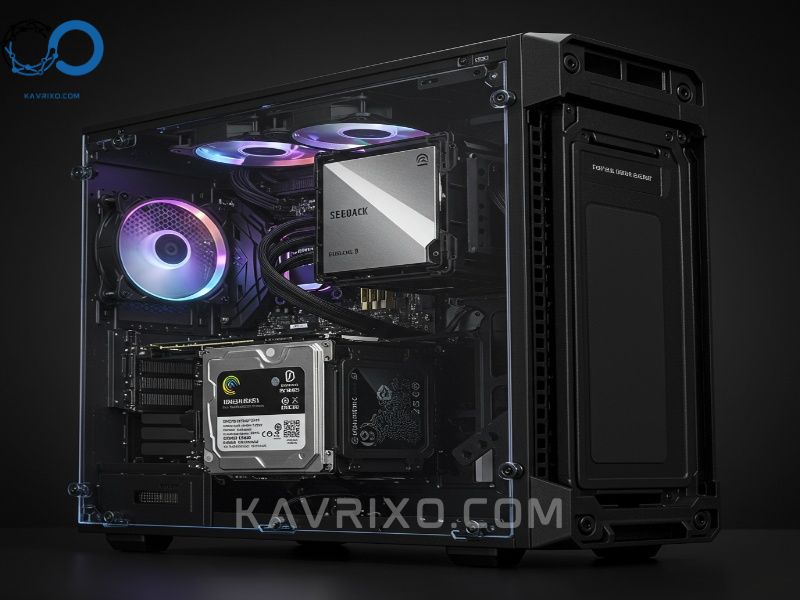
Toshiba Lineup
| Series | Name | Use Case | Key Features | Reliability Rating |
|---|---|---|---|---|
| P300 | Standard | Desktop/PC general use. | Standard 7200 RPM, solid performance. | Standard |
| X300 | Performance | Gaming, creative professionals. | High speed (7200 RPM), large cache, robust design. | High Performance |
| N300 | NAS/Prosumer | NAS environments, high workload rates. | High endurance, vibration compensation. | Very High (24/7) |
Toshiba is highly competitive in the performance space (X300) and offers excellent NAS options (N300) that often boast reliability metrics on par with the higher-end offerings from WD and Seagate.
Practical Tips for Maximizing HDD Lifespan and Reliability
No matter which best HDD brand you choose, the lifespan of your drive relies heavily on the environment you provide it. Here are some essential tips I always emphasize to my clients:
The Importance of Proper Cooling and Vibration Reduction
Heat is the number one enemy of mechanical drives. HDDs are designed to operate within specific temperature ranges (usually 40°C to 50°C). Running a drive constantly above 55°C will significantly shorten its lifespan.
- Airflow: Ensure drives are installed in cages with active airflow (fans pushing cool air over the drives).
- Vibration: Vibration causes the read/write heads to wobble, increasing wear and tear. Use rubber grommets or specialized anti-vibration mounting hardware, especially if you have multiple drives spinning simultaneously (like in a NAS). This is crucial for maintaining the integrity of the most reliable hard drive you purchase.
Monitoring Health: SMART Data is Your Friend
All modern hard drives utilize SMART (Self-Monitoring, Analysis, and Reporting Technology). This built-in system monitors critical reliability metrics, such as spin-up time, temperature, and pending sector counts.
I strongly recommend using monitoring software (like CrystalDiskInfo for Windows or built-in utilities for NAS devices) to check SMART data regularly. If you see uncorrectable errors or a rapid rise in temperature, it’s a clear warning sign that your best internal hdd may be nearing the end of its life, giving you time to back up the data before disaster strikes.

The Golden Rule: Redundancy (Backups!)
Even the most reliable hard drive in the world will eventually fail. It’s not a matter of if, but when.
The concept of the best hdd brand is about minimizing the risk, not eliminating it. Always follow the 3-2-1 backup rule: Keep three copies of your data, on two different types of media, with one copy off-site. Your internal hard drive is copy number one; ensure you have copies two and three ready to go.
Final Verdict: Which Best HDD Brand Should You Choose?
After reviewing the market leaders and their specialized series, we can summarize the choice for the best HDD brand based on your specific needs:
For the Performance Seeker (Gaming/Workstation):
- Best Brand: Western Digital (WD Black) or Seagate (FireCuda).
- Why: These drives offer 7200 RPM, large cache, and targeted firmware for fast data access, making them the best hard disk drive for gaming.
For the Reliability Seeker (NAS/24/7 Operation):
- Best Brand: Western Digital (WD Red Plus/Pro) or Seagate (IronWolf/IronWolf Pro).
- Why: These drives are CMR-based, include vibration resistance (RV sensors), and have RAID-optimized firmware, ensuring they remain the most reliable drives under continuous heavy load.
For the Value Seeker (General PC Storage/Archival):
- Best Brand: Seagate (Barracuda) or Western Digital (WD Blue).
- Why: They offer the best cost-per-terabyte ratio for standard desktop environments.
Ultimately, both WD and Seagate manufacture truly top rated internal hard drives. You should focus less on the overall brand name and more on selecting the specific series that matches your intended workload. By choosing the correct product line (e.g., Red for NAS, Black for Gaming), you ensure you are investing in a drive designed to perform and survive in your unique operating environment, guaranteeing you get the best internal hard drive for your money.

Pingback: Selecting the Best Laptop for Beginners: A Comprehensive 2025 Buying Guide - Kavrixo Blog